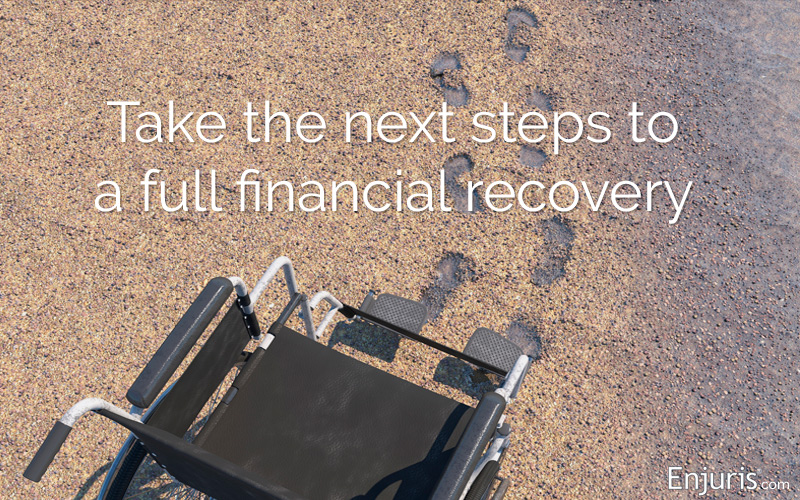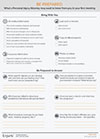
A breakdown of the disability benefits you may be eligible to receive
In California, injured residents may be eligible to receive State Disability Insurance (SDI), Social Security Disability Insurance (SSDI), or Supplemental Security Income (SSI).
Had enough of the initialisms? Here’s one more:
If you’re eligible for SDI or SSDI, you might also qualify for State Supplemental Payments (SSP).
All of this is a bit confusing, so let’s clear things up by answering some basic questions about benefit programs available to Californians.
What is State Disability Insurance (SDI)?
SDI is a state program administered by the Employment Development Department (EDD). The program is intended to provide financial benefits to California residents during their first year of disability.
Most California employees have a small part of their income taken out of their paychecks and placed in the SDI fund. You can receive SDI benefits so long as you have paid into the fund and are unable to work because:
- You have a disability (defined as “any mental or physical illness or injury which prevents you from performing your regular work”) that’s not related to your job,
- You’re pregnant, or
- You need to take leave to care for a sick relative or to bond with a new child.
SDI generally pays 60-70% of your monthly wages (based on a 12-month wage average) for up to 52 weeks of disability.
What is Social Security Disability Insurance (SSDI)?
SSDI is a federal program administered by the Social Security Administration (SSA). The program provides financial benefits to people who can’t work because they have a medical condition that’s expected to last at least 1 year or result in death.
In order to qualify for SSDI, you must:
- Be “totally disabled.” The SSA considers you “totally disabled” if: (1) you can’t perform the work you performed prior to your injury; (2) there’s no other work you can perform; and (3) your disability has lasted or is expected to last for at least 1 year or result in death.
- Have worked long enough. As you work, you acquire “work credits” based on your total yearly wages. For example, in 2019, you earn 1 credit for each $1,360 in wages (with a maximum of 4 credits per year). In order to qualify for SSDI, you must have accumulated enough work credits. The number of work credits you must acquire depends on your age and when you became disabled.
What is Supplemental Security Income (SSI)?
SSI is very similar to SSDI. Just like SSDI, you must be “totally disabled” before you can receive SSI benefits.
The main difference between SSDI and SSI is that SSI has an additional need-based requirement.
In order to receive SSI, your countable resources must be equal to or less than $2,000 for an individual or $3,000 for a couple. Countable resources include things like cash, land, and personal property that could be sold for cash.
What is the State Supplemental Payment (SSP)?
SSP is a state-funded program for people who receive SSI. To put it simply, California adds a certain amount of money to the monthly amount SSI recipients receive from the federal government. This amount can change from year to year. In 2019, the maximum SSP was $160 per month for an individual.
The theory behind SSP is that California has a high cost of living relative to other states. As a result, it wouldn’t make sense for California residents to receive the same amount of SSI that residents in, say, North Dakota receive.
What about Medicare and Medicaid?
If you’re disabled, chances are your medical bills are piling up.
Does this mean you’ll spend all your SSDI or SSI benefits on medical expenses?
Not necessarily.
If you’ve been approved for SSDI benefits, you’ll automatically receive Medicare (a government program that helps with medical costs) after 2 years. If you’ve been approved for SSI benefits, you’ll receive Medicaid (a government program that helps with medical costs).
How does workers’ compensation affect your disability benefits?
Workers’ compensation is a form of insurance that pays medical expenses and lost wages to employees who are injured while doing their job. All employers in California are required to carry workers’ compensation insurance.
Workers’ compensation has nothing to do with the SSA. The injuries and medical conditions covered by workers’ compensation are different than those covered under SSDI and SSI. For example, it’s not necessary to be “totally disabled” in order to receive workers’ compensation insurance.
Assuming you’re eligible, you can receive workers’ compensation benefits and SSDI or SSI benefits at the same time. However, the total amount of these benefits can’t exceed 80% of your average earnings before you became disabled.
If your workers’ compensation benefits and social security disability benefits exceed the 80% threshold, the SSA (in most states) will reduce the amount of disability benefits you receive until your benefits total 80%. In some states, your workers’ compensation benefits will be reduced instead.
How do you apply for SSI or SSDI in California?
There are 3 ways to apply for SSI or SSDI in California:
- You can apply online.
- You can call Social Security at 1-800-772-1213 or 1-800-325-0778 (TTY) and a representative will take your application over the phone.
- You can visit your local Social Security office and apply in person.
Whichever method you choose, you should have the following information ready:
- Names, addresses, and phone numbers of all doctors, hospitals, and clinics that have supplied you with medical treatment and the treatment dates
- Names of any medications you’re taking
- Copies of any medical records you have
- Your Social Security Number and the Social Security Numbers of your spouse and any children under the age of 18
- A certified copy of your birth certificate
- Proof of U.S. citizenship or legal residency
- A certified copy of your military discharge papers (if you were in the military)
- Your most recent W-2 Form or your most recent tax return
- Information on any workers’ compensation you receive or have received
- A summary of all your jobs during the previous 15 years
What happens if your SSI or SSDI claim is denied?
Once you submit your application, it will be reviewed by medical and vocational experts. These experts may conduct investigations and, in some cases, the state might require you to undergo a medical exam.
In most cases, you’ll receive a decision in 3-5 months. If your request is denied, you have 60 days to appeal the decision. Your appeal can take any one of the following forms:
- Reconsideration. A reconsideration is a review of your claim by someone who didn’t take part in reviewing your initial application. You can request a reconsideration online.
- Hearing with an administrative law judge. You can request a hearing in front of an independent administrative law judge who played no part in your initial determination. The hearing is generally held within 75 miles of your home. You can request a hearing online.
- Review by the Appeals Council. You can request that an Appeals Council review your denial. Notably, the Appeals Council can deny a request for review if it believes the initial decision was supported by evidence. You can request a review by the Appeals Council online.
- Federal court review. If the Appeals Council decides not to review your case or if you disagree with the Appeals Council’s decision, you can file a civil suit in a federal district court. This is the last level of the appeals process.
Can you hire a Social Security disability attorney to help?
You can hire an attorney to help you with your initial application, or to help you with your appeal. Use our free online directory to locate a qualified attorney in your area.
 Your First Meeting with an Attorney
Your First Meeting with an Attorney
A worksheet to prepare for your first meeting with a personal injury attorney – what to bring, what they'll ask
Download in PDF format![]()
See our guide Choosing a personal injury attorney.
